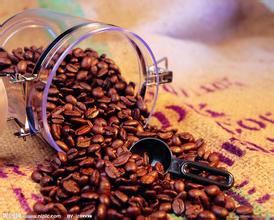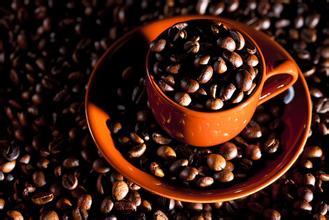Cultivation techniques of coffee trees how would you like your latte coffee milk foam to be beaten?
5 Editors of cultivation techniques
There are many legends about the discovery of coffee. There is a legend that in the 13th century, there was a prince in Ethiopia who found that his camel loved to eat a small oar fruit on a bush, and he was very excited and energetic after eating it. So he also picked some small berries to taste, and finally discovered this refreshing coffee drink.
Another legend is that one day in 500 BC, an Ethiopian shepherd herded his sheep to a strange place for grazing. On a small hill, the sheep ate a kind of small red fruit on a small tree. after returning in the evening, the sheep were unusual in the fence, not as peaceful and docile as usual, but excited, restless, tearing and shouting, and even jumping all night long. The owner thought that the sheep had been poisoned by eating some grass and got up several times to take a closer look at the lights, but they saw the sheep in high spirits and alive. It doesn't look like poisoning pain. The next morning, the shepherd was ready to drive the sheep to another place for grazing. After opening the fence, the sheep ran desperately to the mountain with little red fruit. No matter how the shepherd whipped to stop it, when the shepherd was exhausted, he had to follow the sheep to the hill. The shepherd was very surprised to see each sheep scrambling to eat the little red fruit, so he picked some small red fruit and chewed it over and over again and found that the little red fruit was sweet with some bitterness.
When he returned from grazing, the shepherd felt so excited that he couldn't sleep all night. He even wanted to dance with the hands of the sheep and dance with his feet. The magic of the little red fruit spread quickly, and the shepherds of Ethiopia picked and chewed the little red fruit everywhere and sold it on the market. Later, this little red fruit developed into the most popular coffee drink in the world today.
Coffee fruit contains two seeds, namely coffee beans. The two beans are connected face to face with each other on one side of the plane. Each coffee bean has a thin outer film, which is called silver skin, and its outer layer is covered with a yellow outer skin, called endocarp. The whole coffee bean is wrapped in a sticky pulp to form the coffee pulp, which is soft and sweet, with the outer shell.
Planting history
In fact, the Arabs began to grow coffee in 525 BC, and chewing fried coffee beans became popular in the Arab region. In 890 AD, Arab merchants sold coffee beans to Yemen, and Yemenis made coffee beans into drinks for the first time. In the 15th century, coffee was introduced into Europe, Asia and soon into America. By the 18th century, coffee was widely grown in tropical and subtropical regions of the world and became one of the three major drinks in the world. Coffee ranks first among the top three beverages in annual sales, three times as much as cocoa and four times as much as tea. Although coffee has been cultivated in the world for more than 2000 years. However, coffee has been cultivated in China for only a few hundred years. In 1884, Taiwan Province began to introduce coffee. At the beginning of the 20th century, overseas Chinese brought coffee back from Malaysia to grow in Hainan Province. Later, tropical and subtropical provinces in the south began to grow plant coffee one after another. Although the cultivation time is short, the coffee from Hainan and Yunnan provinces in China has excellent quality and unique charm, so it enjoys a high reputation in the world. After some foreign businessmen buy it at a low price, it is processed and sold to the international market. It has become an expensive world-class drink, especially the small-grain coffee grown in Yunnan Province. Because of the large temperature difference between day and night in Yunnan, it is conducive to the accumulation of substances in it. Therefore, it tastes strong but not bitter, fragrant but not strong, oily and fruity, so it is praised as "the best quality coffee in the world" by coffee merchants at home and abroad.

Important Notice :
前街咖啡 FrontStreet Coffee has moved to new addredd:
FrontStreet Coffee Address: 315,Donghua East Road,GuangZhou
Tel:020 38364473
- Prev

What conditions are needed to grow coffee trees Philippine coffee and domestic is better than there
The origin of coffee trees is Ethiopia in Africa. Coffee tree in botany, belongs to the Rubiaceae coffee subgenus evergreen tree, and generally known as coffee beans, survey is the coffee tree fruit seeds, only because the shape like beans, so called coffee beans. Climate is the decisive factor in coffee cultivation, coffee trees are only suitable for growing in tropical or subtropical
- Next

What kind of environment is most suitable for planting coffee trees?
The planting conditions of coffee trees, however, not all the land located in this area can produce good coffee trees. The ideal planting conditions of coffee trees are as follows: the temperature is between 15 ℃ and 25 ℃, and the annual rainfall must reach 1500 mm to 2000 mm. At the same time, the rainfall time should be in line with the flowering cycle of coffee trees. Of course, except for the matching of seasons and rainfall
Related
- Does Rose Summer choose Blue, Green or Red? Detailed explanation of Rose Summer Coffee plots and Classification in Panamanian Jade Manor
- What is the difference between the origin, producing area, processing plant, cooperative and manor of coffee beans?
- How fine does the espresso powder fit? how to grind the espresso?
- Sca coffee roasting degree color card coffee roasting degree 8 roasting color values what do you mean?
- The practice of lattes: how to make lattes at home
- Introduction to Indonesian Fine Coffee beans-- Java Coffee producing area of Indonesian Arabica Coffee
- How much will the flavor of light and medium roasted rose summer be expressed? What baking level is rose summer suitable for?
- Introduction to the characteristics of washing, sun-drying or wet-planing coffee commonly used in Mantenin, Indonesia
- Price characteristics of Arabica Coffee Bean Starbucks introduction to Manning Coffee Bean Taste producing area Variety Manor
- What is the authentic Yega flavor? What are the flavor characteristics of the really excellent Yejasuffi coffee beans?

